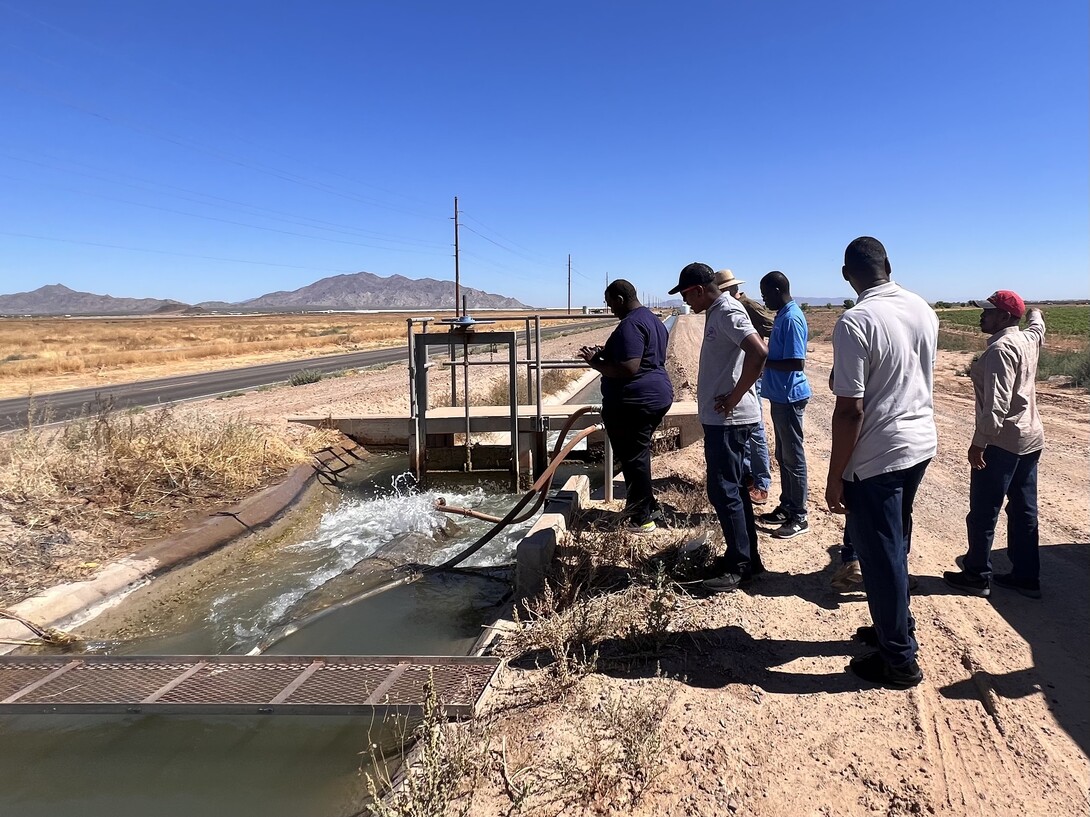
This June, six irrigation grad students from the University of Nebraska–Lincoln took the opportunity to tour some of the biggest irrigation projects in the United States.
Sponsored by Valmont Industries, the students were able to visit various canal systems, field sites, dams and agricultural company headquarters to learn about the latest irrigation technology and expand their knowledge.
The group traveled around the southwestern United States, first flying to Arizona and taking stops in Colorado and New Mexico.
“This irrigation tour combined two things I love the most: travel and irrigation,” said Thais Murias, a doctoral student from Brazil. “Sharing knowledge and experiences was one of my favorite parts of this trip”
The stop in New Mexico featured an inside tour of the Navajo Agricultural Products Industry fields, control room, and post-harvest operations. NAPI is a huge agricultural project in the United Staes that controls over 109,000 acre-feet of water every year to provide for crop fields growing pinto beans, alfalfa, corn, wheat and potatoes.
Managing this amount of resources requires up-to-date technology, including a control room for 650 pivots that was used to monitor and manage all of the project pivots’ irrigation systems.
Another destination during the week was the Central Arizona Project. Recognized as one of the biggest and most expensive water projects in the U.S., CAP uses pumps and pipelines to move water to crop land and cities across the state.
Visiting the project site allowed the students to appreciate how important irrigation technology is in water management.
“At the intake structure, the water is diverted into the CAP canal system, which spans over 335 miles,” said Osman Adam, master’s student from Sudan. “Pumping stations along the CAP canal lift the water to higher elevations.”
Not only did this tour provide a unique experience of southwestern irrigation technology, but it also gave the students an opportunity to see beautiful scenery and enjoy the local tourist attractions. The group visited an old mining town, the Mesa Verde Cliff Dwellings, and took a train ride next to streams, rock faces, and forests in Colorado.
“My favorite part of my trip is seeing the high mountains with beautiful, varied shapes and red and yellow rocks” said Hakam Almagzoop, a graduate student from Sudan.
It was an unforgettable tour that taught these students valuable insights and lessons that they can take back with them in their research and education.
After reflecting on the trip, Murias said that she gained a “new perspective that made me realize that anything is possible if you put your mind to it. Me as the next generation can contribute to improve water use efficiency in agriculture.”







